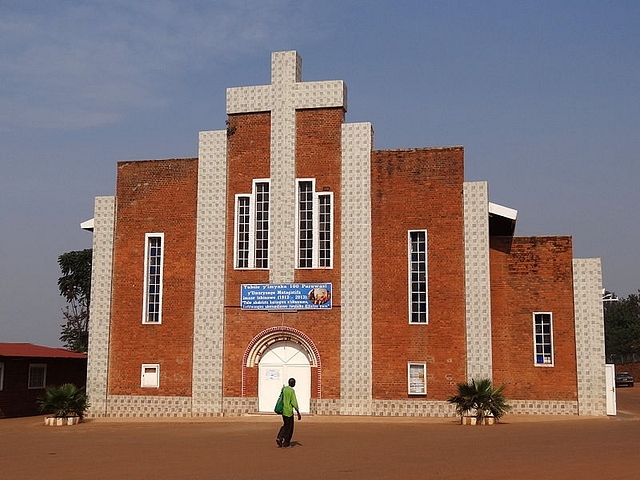
Rwanda In Mourning, 25 Years Since Genocide That Killed 800000 And Was Planned, Aided And Carried Out By Catholic Church
Beginning today (April 7), Rwanda will begins a one hundred days of mourning in memory of over 800,000 people slaughtered in a genocide that shocked the world, a quarter of a century on from the day it began.
President Paul Kagame will lead the nation in the remembrance by lighting a flame at the Kigali Genocide Memorial, where more than 250,000 victims are believed to be buried, mainly from the Tutsi people.
After lighting the flame, Kagame is expected to deliver a speech at the Kigali Convention Centre, a dome-shaped auditorium in the centre of the capital, a modern building emblematic of the regeneration of Rwanda since the dark days of 1994.
Kagame will then preside over a vigil at the country’s main football ground. The Amahoro National Stadium — whose name means “peace” in Rwanda’s Kinyarwanda language — was used by the UN during the genocide to protect thousands of people of the Tutsi minority from being massacred on the streets outside.
A brief history of the conflict
The two communities in Rwanda 'Tutsi' and ‘Hutus’ were identified as racial types by the European missionaries, anthropologists and colonial administrators. The 'Tutsi'/ were invaders and they were ‘clever’, similar to Europeans to a degree and they appropriated the land through trickery from Hutu who became their slaves. Implanting this myth initially, the colonial administration and its religious arm, the Catholic Church favored the Tutsis, agreeing with colonial government policy in considering Tutsi and Hutu as distinct races. However, the Church’s support to Tutsis waned dramatically with the Rwandan revolution in 1959.
As some Rwandan patriots of Tutsi origin started questioning the Catholic Church in meddling in politics, the Church joined hands with the Hutus. The Church started filling its local hierarchies with Hutus and the Belgian Catholic clergy even participated in drafting the 'Bahutu Manifesto' in 1957, which paved the way to the genocide later. With colonial and Church support, the Hutu-republican party captured power in 1959 and initiated the first Rwandan massacre in which more than 20,000 Tutsis were killed.
In 1959, Tutsi monarchy, which ruled the country, was overthrown by the majority Hutus. Tens of thousands of Tutsis went into exile in neighbouring countries, including Uganda. In exile, a group of Tutsi formed a rebel group, called as the Rwandan Patriotic Front (RPF), and invaded Rwanda in 1990. Fighting continued until a 1993 peace deal was agreed.
A plane carrying president Juvenal Habyarimana and his counterpart Cyprien Ntaryamira of Burundi - both Hutus - was shot down, killing everyone on board on the night of 6 April 1994. Hutu extremists in Rwanda blamed the RPF and immediately started a well-organised campaign of slaughter. The RPF said the plane had been shot down by Hutus to provide an excuse for the genocide.
In just 100 days, Hutu extremists had slaughtered over 800,000 people. Most of the dead belonged to the minority ethnic Tutsis. Moderate Hutus, who were seen by the extremists as their political opponents, were also murdered in large numbers.
The demonization of Tutsis preceded the 1994 genocide. Even though this was a clear and grave human rights violation, Bishop Perraudin and his senior aides dismissed these events as a social revolution intended to redress social injustices. For thirty years these views were not questioned
The Rwandan genocide of 1994 is the result of a long chain of events in which Church was a major player and hence a key facilitator of genocide. Yet, the Vatican did not find it right to express ‘regret’ or apology – what has happened is the statement of a regional official of the Church.
Finally in 2016, the Catholic church in Rwanda apologised for the church’s role in the 1994 genocide, saying it regretted the actions of those who participated in the massacres.
“We apologise for all the wrongs the church committed. We apologise on behalf of all Christians for all forms of wrongs we committed. We regret that church members violated [their] oath of allegiance to God’s commandments,” said the statement issued by the Conference of Catholic Bishops.
The statement acknowledged that members of the Catholic church in Rwanda planned, aided and carried out the genocide, in which more than 800,000 ethnic Tutsis and moderate Hutus were killed by Hutu extremists. The church’s admission is a significant development as the church repeatedly denied accusations in the years following the genocide